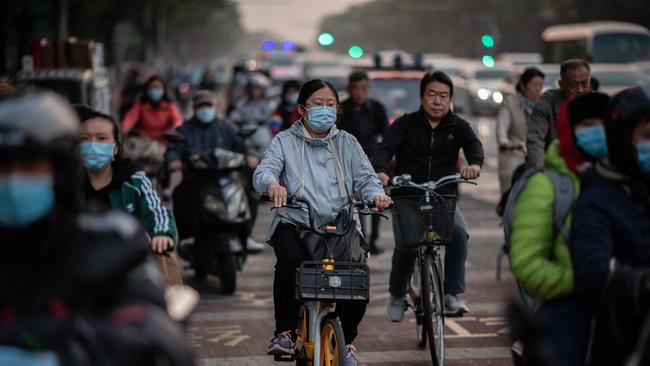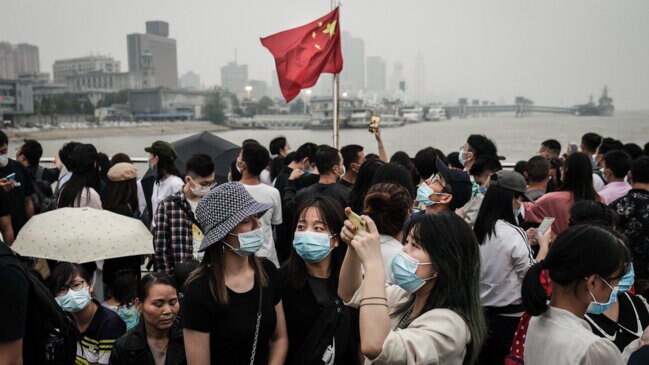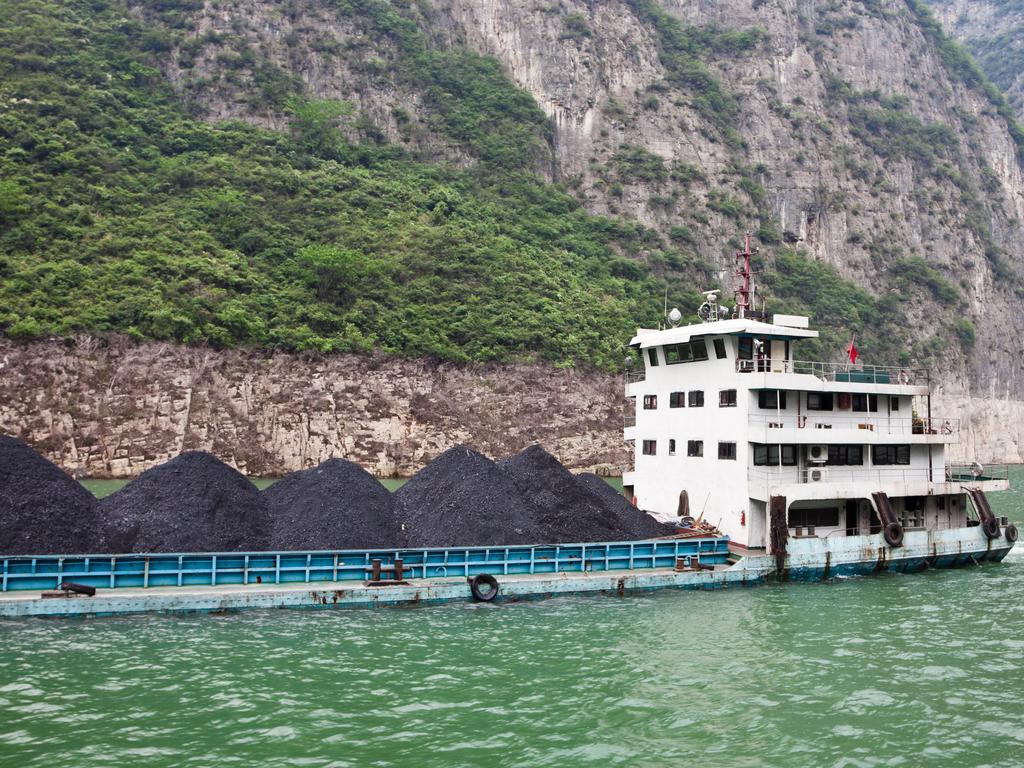Coronavirus: China posts bumper 4.9 per cent economic growth
Australia’s biggest trading partner has almost reached its pre-COVID level of economic activity after it grew by 4.9pc in the third quarter.

Australia’s biggest trading partner, China, continues to pull away from the US, Japan and India, as its economic growth rate increased to 4.9 per cent in the third quarter.
Packed cinemas screening patriotic blockbusters, a dramatic recovery in domestic travel and steel mills that never stopped during the coronavirus outbreak have all contributed to China’s dramatic economic recovery.
The third-quarter growth rate was slightly below the expectations of surveyed economists, although many were optimistic about the outlook for the world’s second-biggest economy.
“We think growth will continue to pick up in the near term,” said Julian Evans-Pritchard, senior China economist at Capital Economics. “Fiscal policy is set to remain supportive until at least the start of next year, which should keep activity in the industry and construction (sectors) strong.”
The new data underlined that China — the first country to go into lockdown after the coronavirus was found in Wuhan — is growing much faster than rival major economies. The International Monetary Fund last week said China would be the only significant economy to grow in 2020. The IMF projected China would grow by 1.9 per cent, as the global economy was forecast to contract by 4.4 per cent.
.

Research by the Lowy Institute released on Monday found China’s superior management of COVID-19 had seen it gain ground on its rival superpower the US. Japan’s economy — the world’s third-biggest — is not forecast to recover to its pre-pandemic level until 2027, while India lost more growth potential than any other on Lowy’s Asia Power Index.
“Legitimacy and leadership on the world stage start with the capacity of leaders to govern well at home,” said Herve Lemahieu, Lowy’s director of Asian power and diplomacy on the decline in power of the US on the index.
China has almost brought the coronavirus under control, increasing the confidence of Chinese consumers who earlier this month made more than 600 million domestic trips during the Golden Week holiday.
In the three months to the end of September, the economy grew by 4.9 per cent, year on year — faster than the second quarter’s 3.2 per cent. In the first three months of the year, China’s economy contracted sharply by 6.8 per cent, as the country was locked down to contain the coronavirus.
Larry Hu, head of China economics at Macquarie Capital, said the economy would grow even faster in the fourth quarter so long as positive retail sales trends continued. “The single most important thing for the Chinese economy in the coming months is whether service consumption can catch up,” he said.
In a sign that consumer recovery was under way, a Chinese war epic last month became the world’s biggest box office hit of the year. Half-capacity cinemas around China have been packed with audiences to watch The Eight Hundred, which grossed more than $600m in its first month.
The Australian economy is highly exposed to China, which is by far its biggest trading partner.
Official trade numbers released last week revealed Australia had sold more than $120bn of goods to China in the first nine months of the year.
Exports were particularly strong for ingredients for China’s industrial sector, which has benefited from government stimulus.
Sales of iron ore were strong while Australia’s share of China’s coal imports hit record levels, despite repeated reports of a boycott.
China’s imports from Australia were down 6.3 per cent on the same period last year, less than half the 14.8 per cent decline of China’s total imports from the world. That has seen Australia’s share of China’s total imports increase — even as Beijing launched retaliation on Australian beef, wine, barley and cotton after increased political tension between the two countries.








To join the conversation, please log in. Don't have an account? Register
Join the conversation, you are commenting as Logout